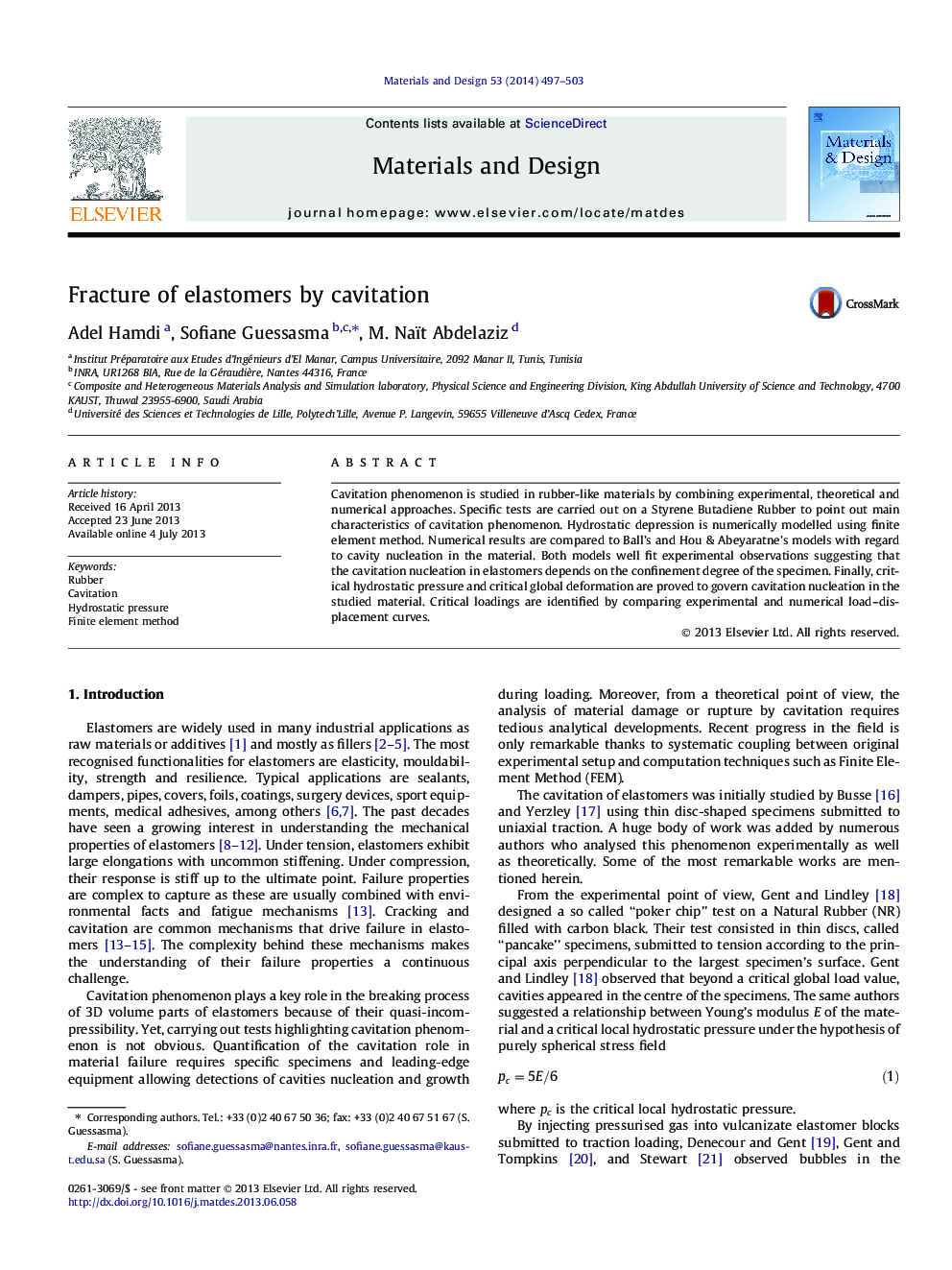| Article ID | Journal | Published Year | Pages | File Type |
|---|---|---|---|---|
| 829766 | Materials & Design (1980-2015) | 2014 | 7 Pages |
•Cavitation nucleation in elastomers depends on confinement degree of specimen.•Critical hydrostatic pressure and global deformation govern cavitation nucleation.•Predicted hydrostatic pressure is 4.28 ± 0.07 MPa which is specimen size independent.•Sudden volume change occurs at a hydrostatic pressure of 6.35 ± 0.10 MPa.
Cavitation phenomenon is studied in rubber-like materials by combining experimental, theoretical and numerical approaches. Specific tests are carried out on a Styrene Butadiene Rubber to point out main characteristics of cavitation phenomenon. Hydrostatic depression is numerically modelled using finite element method. Numerical results are compared to Ball’s and Hou & Abeyaratne’s models with regard to cavity nucleation in the material. Both models well fit experimental observations suggesting that the cavitation nucleation in elastomers depends on the confinement degree of the specimen. Finally, critical hydrostatic pressure and critical global deformation are proved to govern cavitation nucleation in the studied material. Critical loadings are identified by comparing experimental and numerical load–displacement curves.
